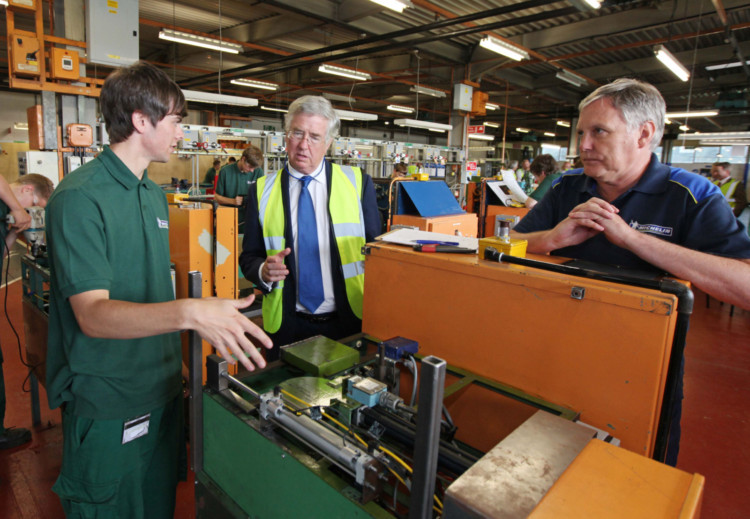The Talent and skill of Scotland’s workforce helped the nation ride the recession better than much of the rest of the UK, according to RBS economist Stephen Boyle.
The banking giant’s group head of economics said it was his “personal theory” that Scotland remains much closer to pre-recession levels of output than other parts of Great Britain and Northern Ireland thanks to the qualifications of its working population.
And he said the structural issue could also help account for a foregoing decade of stronger relative performance an increase which has left Scotland behind only London and the south east of England in the 12-strong table of UK nations and regions.
A decade ago Scots’ contribution to UK GDP was around 94% of the average, but most recent figures put it at 99% with the actual level now likely to be higher.
Mr Boyle contrasted that position with Wales, where the average individual’s economic impact is three-quarters of that expected in Scotland.
And he said the gap between the nations’ diverging fortunes continued to widen.
Latest figures show the Scottish economy is 2% down on its pre-recession output, and almost a whole percentage point better off than UK as whole.
“In Scotland, the recession wasn’t as bad as in the rest of the UK, and Scotland is closer to pre-recession levels of output than the rest of the UK,” Mr Boyle told The Courier during a speaking tour of business clients across the north of Scotland.
“I think there is a short-term, cyclical element to this.
“Scotland has done better because the Scottish Government has brought forward capital investment that cushioned the downside during the 2009/10 period.
“But there’s a long-term structural issue which might be at play in Scotland.
“If you look over a longer period of time, Scotland’s performance relative to the rest of the UK has been strengthening for almost a decade now.”
Mr Boyle’s explanation for Scotland’s improving fortunes lies in the quality of the workforce a factor which continues to stand the country in good stead as the economic recovery continues.
“The quality of labour is really good in Scotland,” Mr Boyle said.
“Whether it’s schools, colleges, universities or apprenticeships, or training within our businesses the qualifications are better.”
The former head of the Scottish Government’s labour market analysis unit said he was pleased to conduct his most recent mini-tour of business customers in the north of Scotland amid improving economic conditions and “with a smile on his face”.
Mr Boyle visited Dundee, Aberdeen and Inverness as part of the bank’s outreach exercise, and said it became obvious very quickly that his audience’s business interests were now on an improved footing.
In Dundee, he said he had enjoyed a lunch with business leaders from a range of SMEs, including “car dealers, house builders and farmers”, who he said would not be shy about letting him know if his assessment did not match conditions on the ground.
Thankfully for him, the room was in broad agreement that trading conditions were, gradually, on the up.
“This year is better than last year, and next year looks like it’s going to be better again,” he said.
“GDP growth has been decent and there are more people in work in the UK than ever before.
“Retail sales are growing reasonably strongly, and the housing market is growing.
“All these indicators are going in the right direction.
“Is it going to be consistent?
“Well, all the forward-looking indicators, like purchasing managers surveys, are looking that way.”
He said the domestic recovery was matched by a more stable eurozone but warned that instability in Europe remained one of a string of potential humps in the road, and would not be resolved in the near future.
“It could go wrong in the eurozone,” Mr Boyle said. “It’s not gone away.
“Aside from the difficulties in Cyprus, it’s been relatively quiet on the European front this year but that’s a conundrum that will take a decade to solve.
“In terms of getting from where we are now to a solution, there’s ample opportunity for problems to flare up Greece being the obvious example.”
Mr Boyle also warned that budgetary difficulties in the US could yet have a further impact on Europe’s economic fortunes, with repeated disagreements over policy having already sent Washington to the brink.
“The other thing is that we’ve been living through an extraordinary period of monetary policy, with low interest rates and quantitative easing,” he added.
“The challenge to the recovery, and to the central banks, is how you manage the process of moving from extraordinary monetary policy back to a normal monetary policy.”
He said a deft touch would be required in the years to come but stressed the “good news” was that the stimuli would likely be reset in better times, reducing the pain of their recall of cash printed during the slowdown.
